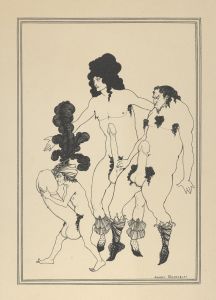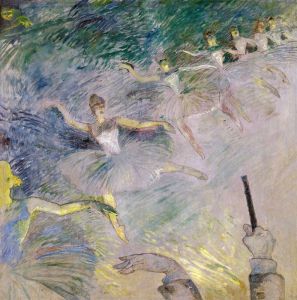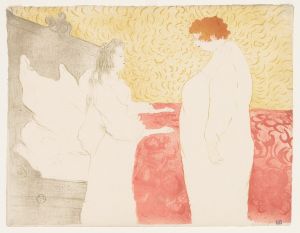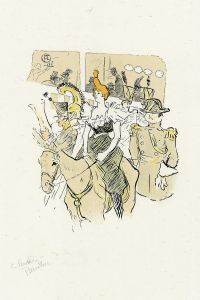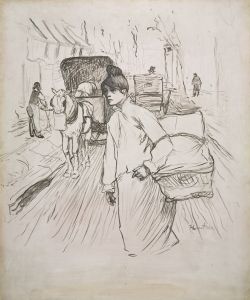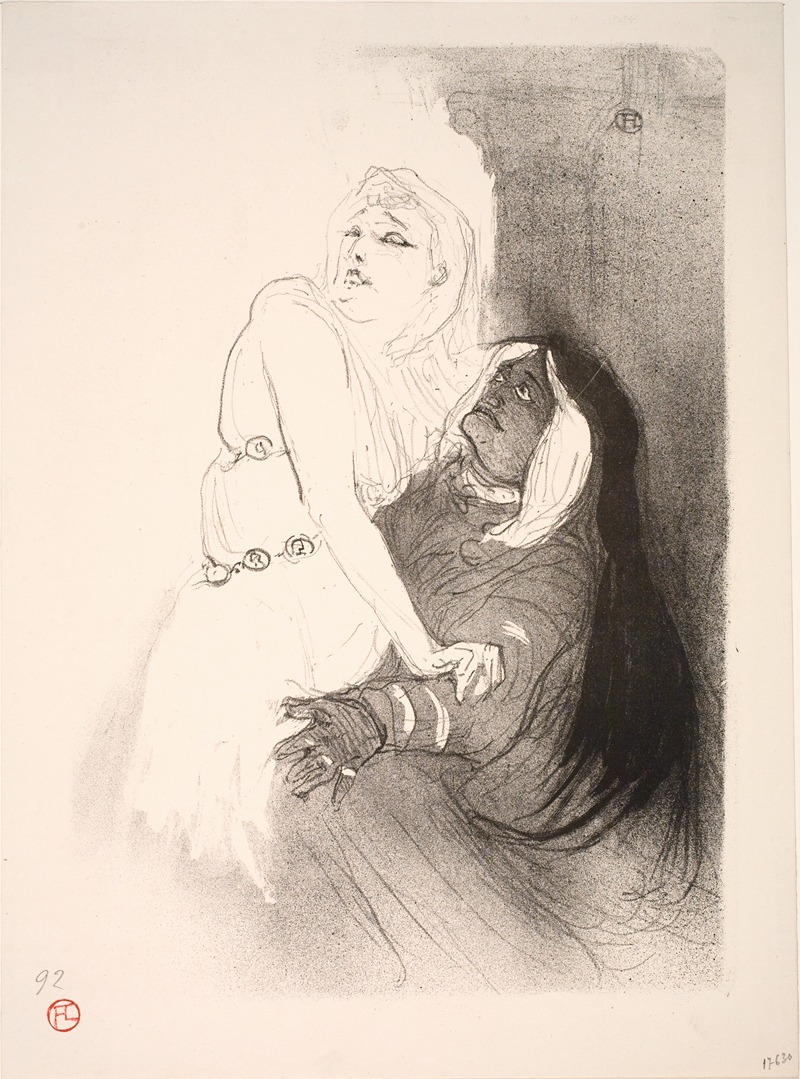
A la Renaissance, Sarah Bernhardt dans Phèdre
A hand-painted replica of Henri de Toulouse-Lautrec’s masterpiece A la Renaissance, Sarah Bernhardt dans Phèdre, meticulously crafted by professional artists to capture the true essence of the original. Each piece is created with museum-quality canvas and rare mineral pigments, carefully painted by experienced artists with delicate brushstrokes and rich, layered colors to perfectly recreate the texture of the original artwork. Unlike machine-printed reproductions, this hand-painted version brings the painting to life, infused with the artist’s emotions and skill in every stroke. Whether for personal collection or home decoration, it instantly elevates the artistic atmosphere of any space.
Henri de Toulouse-Lautrec, a prominent French painter and illustrator, created the artwork "A la Renaissance, Sarah Bernhardt dans Phèdre" in 1893. This piece is a lithograph, a medium that Lautrec frequently employed to capture the vibrant and dynamic world of Parisian theater and nightlife during the late 19th century. The artwork features the renowned actress Sarah Bernhardt, one of the most famous theatrical figures of her time, in her role as Phèdre, a character from the classical tragedy by Jean Racine.
Sarah Bernhardt, often referred to as "The Divine Sarah," was celebrated for her dramatic presence and her ability to captivate audiences with her intense performances. Her portrayal of Phèdre was particularly acclaimed, and she became synonymous with the role. Phèdre, a character rooted in Greek mythology, is a complex figure tormented by forbidden love and tragic fate. Bernhardt's interpretation of this role was noted for its emotional depth and intensity, qualities that Lautrec sought to capture in his lithograph.
Toulouse-Lautrec's depiction of Bernhardt in "A la Renaissance, Sarah Bernhardt dans Phèdre" is notable for its stylistic elements that reflect both the artist's unique approach and the theatrical atmosphere of the time. The lithograph showcases Lautrec's characteristic use of bold lines and expressive forms, which convey the dramatic essence of Bernhardt's performance. The composition is both a tribute to Bernhardt's talent and a reflection of Lautrec's fascination with the theater as a subject.
The setting of the artwork, the Théâtre de la Renaissance, was one of the prominent venues in Paris where Bernhardt performed. This theater was known for its productions of both classical and contemporary works, and it played a significant role in the cultural life of the city. Lautrec's choice to depict Bernhardt in this context underscores the importance of the theater in his artistic oeuvre and highlights the intersection of visual art and performance during this period.
Toulouse-Lautrec's work is often associated with the Post-Impressionist movement, and his lithographs are considered significant contributions to the art of printmaking. His ability to capture the essence of his subjects with economy and precision made his works highly influential. In "A la Renaissance, Sarah Bernhardt dans Phèdre," Lautrec not only immortalizes a moment in theatrical history but also provides insight into the cultural milieu of fin-de-siècle Paris.
The lithograph is part of a broader body of work by Lautrec that documents the vibrant and often bohemian lifestyle of Paris during the late 1800s. His portrayals of performers, dancers, and other figures from the entertainment world offer a glimpse into the social dynamics and artistic innovations of the era. "A la Renaissance, Sarah Bernhardt dans Phèdre" stands as a testament to Lautrec's skill in capturing the spirit of his time and his ability to convey the emotional power of performance through his art.





